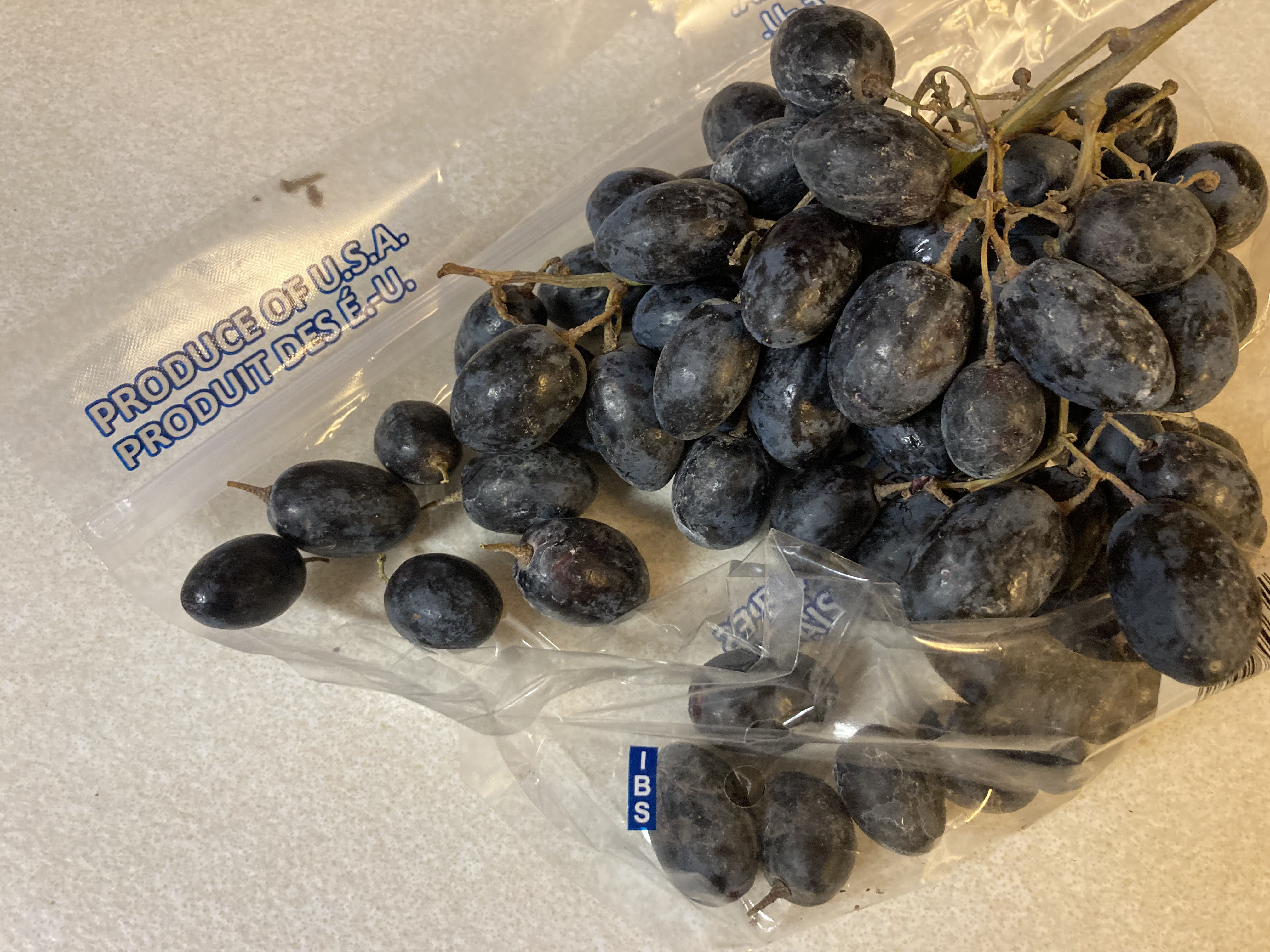Controlled Atmosphere Storage
Contact
University of Arkansas System Division of Agriculture
Cooperative Extension Service
2301 S. University Ave.
Little Rock, AR 72204

Controlled Atmosphere Storage
I remember two things about my first visit to a newly opened Safeway grocery store in the early 1950s. First the nickel Cokes and then, for some reason, a decidedly unhealthy-looking head of Iceberg lettuce. Later, in college, I learned that bit of produce was infected with Erwinia blight, a common bacterial disease that can attack all manner of stored fruits and vegetables. I’m reminded of this as I munch through a bag of table grapes — produced in the United States — in mid-January. My how the supply chain has changed in my lifetime.
Controlled atmosphere storage is nothing new. The spring house where our ancestors kept meats, milk and about anything else they wanted to keep from spoiling is the simplest kind of controlled atmosphere storage. But modifying the gaseous atmosphere around fruits, vegetables and meats is newer – starting in the 1930s when apples were shipped by boat across the ocean. Their quality was maintained by changing the atmosphere surrounding the fruit.
The principle behind CA storage is to reduce the oxygen concentration, increase the carbon dioxide content and then infill with nitrogen gas as needed. Air typically has 18 percent oxygen, 81 percent nitrogen, 0.4 percent carbon dioxide and then a number of other trace gasses in smaller amounts. While the actual numbers vary with what is being stored, in CA storage the oxygen content is often dropped to 5 percent or less, the carbon dioxide is increased to as much as 10 percent, and the nitrogen content raised to 85 percent or higher.
The low oxygen concentration essentially stops the respiration of the produce while the high carbon dioxide concentration serves as a natural fungicide that prevents diseases from developing. Combine this atmospheric regime with temperatures at or just below the freezing point, and a wide array of temperate produce can be held almost in a state of suspended animation for two to six months.
Since the 1970s, CA storage and its little brother – Modified Atmosphere storage – have become ubiquitous in the supply chain network that keeps fresh produce in our stores on a year-round basis. In CA storage, large sealed storerooms have the airspace of the room changed whereas in MA storage, the produce is packaged in different kinds of plastics and, as the product undergoes normal respiration in the sealed package, the internal atmosphere of the bag changes. Because gasses cannot be exchanged with the atmosphere, the level of oxygen falls as the tissue respires while the level of carbon dioxide increases.
This brings me back to my black seedless table grapes. I discovered this particular cultivar in late summer and decided they were my favorite. But I’d gotten used to tasty grapes coming and going as they passed through their normal season of harvest. In the fall they disappeared from the shelves for a while as other dark grapes were offered up, but just before Thanksgiving, I found them again. And all through the winter, they have been consistently available. These January grapes, while still crisp and sweet, are beginning to show their age.
It turns out that table grapes respond well to CA storage because of two factors. First, grapes are a non-climacteric fruit (along with oranges, strawberries, blackberries, etc.), which means that whatever sugar content they have at harvest is what they will maintain through storage. Climacteric fruit (apples, peaches, tomatoes, etc.) produce a burst of ethylene gas at maturity which triggers further enzymatic changes, textural changes and sugar content can increase after harvest. Both types of fruit can be held in CA storage, but they must be managed differently.
Secondly, grapes have a waxy epidermis that prevents the fruit from losing water during storage. Unfortunately, the grape stem (the rachis) is not so endowed, and as the length of storage time increases, the cluster begins to lose its integrity as it dries out. Each grape berry can have a short piece of stem (the peduncle) attached to the fruit. While the eating quality is still good, the loose fruit in the bag is an indication of the end of the storage season.
But not to fear – though staunch environmentalists might disagree – the supply chain has found a workaround. Reading the labels of the nearby grapes with bright green stems, Peru has come to the rescue. By shipping grapes thousands of miles, we will be able to enjoy fresh table grapes throughout the remainder of the winter months.
